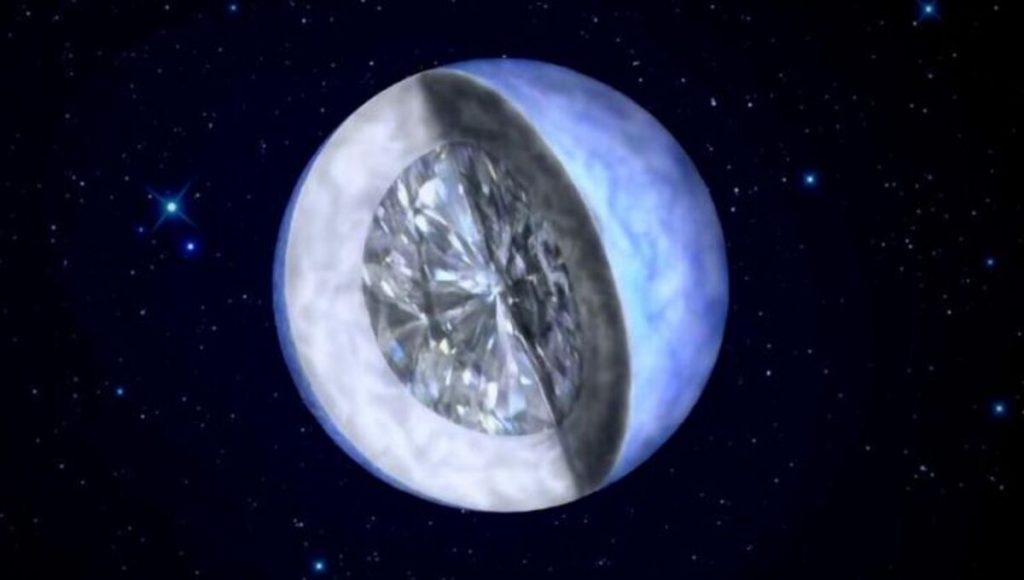Stars, like sparkling gems in the dark sky, can transform into something extraordinary. Recently, scientists discovered a white dwarf star located just 104 light-years away from us. This dying star is composed mainly of carbon and metallic oxygen. As it cools, its center is turning into a dense and hard structure resembling a “cosmic diamond” made of crystallized carbon and oxygen.
The findings were published in a scientific paper accepted by the Monthly Notices of the Royal Astronomical Society and available on the preprint website arXiv.
“In this work we present the discovery of a new Sirius-like quadruple system at 32 parsecs distance, composed of a crystallizing white dwarf companion to the previously known triple HD 190412,” write an international team of astronomers led by Alexander Venner of the University of Southern Queensland in Australia.
“By virtue of its association with these main sequence companions, this is the first crystallizing white dwarf whose total age can be externally constrained, a fact that we make use of by attempting to empirically measure a cooling delay caused by core crystallization in the white dwarf.”
Stars, like everything in the universe, undergo changes. When stars exhaust their fuel for nuclear fusion, they evolve into something new. For most stars, including our Sun, this transformation leads to becoming a white dwarf star.
When a star runs out of fuel, its outer material is ejected into space, while the core collapses into an ultra-dense object about the size of Earth, but with a mass of 1.4 Suns. The matter inside a white dwarf star is highly compressed and prevented from further collapse by electron degeneracy pressure, a phenomenon that stops it from becoming denser like a neutron star or a black hole.
White dwarf stars emit dim light resulting from residual heat. Over time, they cool down and are expected to evolve into something called a black dwarf, a cold lump of crystallized carbon. This process takes an incredibly long time, approximately a quadrillion years.
However, we can detect signs of crystallization starting in the cores of white dwarfs in our vicinity. During this process, carbon and oxygen atoms inside the star stop moving freely and form bonds, arranging themselves into a crystal structure. This releases energy in the form of heat.
The cooling of white dwarf stars slows down during crystallization, causing a plateau in their brightness and color. The precise measurement of a star’s brightness requires accurate distance information, which has become possible through the high-precision stellar mapping conducted by the Gaia mission.
Researchers using Gaia data made an interesting discovery. They found a white dwarf star, named HD 190412 C, in a system previously believed to consist of three stars. This finding turned the system into a quadruple-star system. The properties of HD 190412 C suggest that it is undergoing the crystallization process.
It is unclear whether the crystallizing white dwarf is composed of diamond and although this finding alone is not enough to change our models of white dwarf crystallization, it suggests that there could be numerous similar systems in the universe that we can study to better understand this fascinating process. The proximity of this discovery to Earth opens up possibilities for further research and benchmarking.
“We propose that the discovery of this system at only 32 parsecs suggests that similar Sirius-like systems containing crystallizing white dwarfs are likely to be numerous. Future discoveries may therefore allow for stronger tests of white dwarf crystallization models,” the researchers write.
“We conclude that the discovery of the HD 190412 system has opened up a new avenue for understanding crystallizing white dwarfs.”

